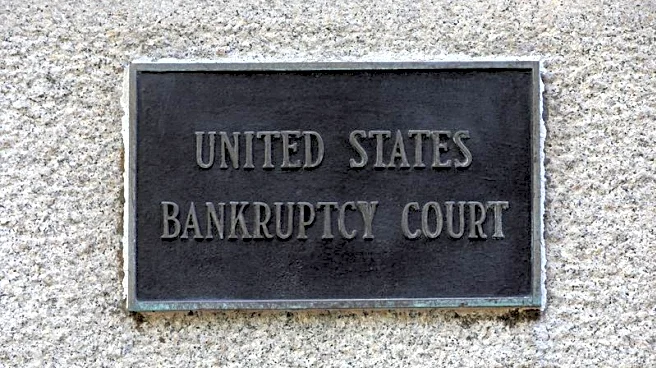What's Happening?
The private credit sector is under increased scrutiny as fears of contagion and rising default rates emerge. J.P. Morgan CEO Jamie Dimon recently highlighted potential risks, likening them to 'cockroaches' in private markets. This has prompted central
banks to closely monitor the sector, with concerns about a repeat of the 2008 subprime lending crisis. Thomas Friedberger, deputy CEO at Tikehau Capital, emphasized that defaults are normal in high-yield private credit, and the management of these defaults is crucial. Recent collapses of U.S. companies First Brands and Tricolor, which relied on complex borrowing arrangements, have intensified focus on private markets. Barclays disclosed a significant loss due to exposure to Tricolor, while Jefferies revealed a substantial position in First Brands. The Chicago Board Options Exchange's Volatility Index spiked amid fears of further exposure among regional U.S. banks.
Why It's Important?
The scrutiny of the private credit sector is significant due to its potential impact on financial stability. As central banks and financial institutions assess the risks, the sector's ability to manage defaults and maintain discipline is crucial. The recent market upheaval underscores the need for active portfolio management and differentiation between managers. The Bank of England plans to review the sector's impact on the real economy and its performance during economic turbulence. This review could influence regulatory approaches and investor strategies, affecting stakeholders across the financial industry. The situation highlights the importance of tighter underwriting standards and strategic capital deployment.
What's Next?
Central banks, including the Bank of England, are preparing to launch reviews to understand the private credit sector's impact on the economy and financial stability. These reviews will engage with private market firms and could take up to a year. The findings may lead to regulatory changes and influence investment strategies. Stakeholders, including investors and financial institutions, will need to adapt to potential shifts in market dynamics and regulatory landscapes. The focus will be on maintaining risk discipline and ensuring alignment of interests between managers and investors.
Beyond the Headlines
The situation in the private credit sector raises questions about the broader implications for financial markets. The comparison to the pre-2008 subprime mortgage debate suggests potential systemic risks. The sector's growth and complexity require careful analysis to prevent unforeseen consequences. Ethical considerations around risk management and investor protection are also relevant. The evolving landscape may lead to long-term shifts in investment strategies and regulatory frameworks, impacting the financial industry's future.














